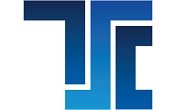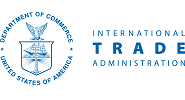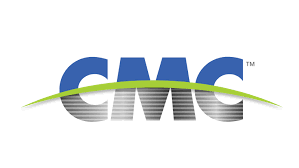Imports decline for a second consecutive year in 2023
2023 was the third-lowest year for steel imports in the last decade, according to an SMU analysis of data from the US Department of Commerce.
2023 was the third-lowest year for steel imports in the last decade, according to an SMU analysis of data from the US Department of Commerce.

Domestic steel shipments increased in December on-year but were down from the previous month, according to the latest data released by the American Iron and Steel Institute (AISI).

Just like doing business in any part of the steel supply chain, there are risks and unknowns in trading steel. But trading companies play an important part, helping businesses navigate the risks and unknowns as they pop up.
Domestic production of raw steel edged lower for a second straight week, according to the most recent data from the American Iron and Steel Institute (AISI).

US steel exports were flat from October to November, but November took the prize for the fewest monthly exports year to date in 2023.

Domestic steel mill shipments increased in November vs. a year earlier, but fell month over month.

Commercial Metals Co. saw robust demand from the construction markets in its first fiscal quarter, which ended on Nov. 30, 2023.
After falling in November, steel imports appear to have bounced back to a five-month high in December.

The latest American Iron and Steel Institute (AISI) production figures show domestic steel output slipping the week before the Christmas holiday. Domestic mills produced an estimated 1,693,000 net tons of steel during the week ended Dec. 23, AISI said. Output was down 1.2% from the previous week but was 7.4% higher than the same week […]

Global steel production rose in November compared to a year earlier with output in China roughly flat and significant gains elsewhere, according to the latest figures from the World Steel Association (worldsteel).

US housing starts jumped in November on lower interest rates stimulating home buying, according to the most recent data from the US Census Bureau.

Most steel markets will be more balanced in 2024, according to the latest sector outlook from Fitch Ratings.

On Monday and Tuesday of this week, SMU polled steel buyers on a variety of subjects, including steel sheet prices, demand, inventory, imports, and what people are talking about in the market. Rather than summarizing the comments we received, we are sharing some of them in each buyer’s own words. We want to hear your […]

The number of open construction jobs reached a record high in October as workforce shortages persist, the Associated General Contractors of America (AGC) reported.
US steel exports declined for the second month in a row in October, falling to the lowest monthly total so far in 2023.
A count of November license applications suggests steel imports were at their lowest monthly level in 33 months.

The Dodge Momentum Index (DMI) slipped in November due to a general decrease in slightly weaker commercial and institutional activity, according to the latest Dodge Construction Network (DCN) data.

On Dec. 6, US Senator Sheldon Whitehouse (D-RI) reintroduced the Clean Competition Act, an environmental trade directive that would impose charges on imports from more carbon-intensive manufacturers.

Global steel output inched higher from September to October, even as production declined in China, the World Steel Association (worldsteel) said in its latest monthly report.

US housing starts crept higher for a second consecutive month in October. Starts were lower, however than the same month last year, according to the most recent data from the US Census Bureau.
The decline in imports from August to September was more pronounced than license applications suggested earlier this month.
The first rule of Steel 101 is that you’re free to talk about Steel 101. We actually encourage it. Last week on Tuesday and Wednesday, SMU’s Steel 101 was held in Mt. Pleasant, S.C.
SMU’s Current and Future Steel Buyers Sentiment Indices both increased this week, based on our most recent survey data. Every other week we poll steel buyers about sentiment. The Steel Buyers Sentiment Indices measure how steel buyers feel about their company’s chances of success in the current market, as well as three to six months down the road. We have historical data going back to 2008. Check our interactive graphing tool here.
South Korea and Brazil will not be maxing out their allowable quotas on hot-rolled sheet shipments to the US for 2023, according to government data analyzed by SMU.
The Architecture Billings Index (ABI) reading from the American Institute of Architects (AIA) and Deltek showed a decline in September.

Global steel demand will reach 1.81 million metric tons in 2023, a 1.8% year-on-year boost, the World Steel Association (worldsteel) said in its updated Short Range Outlook report.
A slowdown in US steel imports has yet to be seen, as total import licenses in September were about even with August’s import levels.

On Monday and Tuesday of this week, SMU polled steel buyers on a variety of subjects, including steel prices, demand, inventories, imports, the UAW strike, and what people were talking about in the market.

ArcelorMittal said it expects to produce less steel than previously forecast in Brazil. Gerdau has hinted at potential layoffs as imports surge. The Brazil Steel Institute is asking the government to raise import levies to 25% from the existing 9.6%. Meanwhile, Mexico has applied levies to some steel imports.

The United Auto Workers (UAW) union has more leverage than the Detroit Three automakers in the current strike that started Sept. 15, according to Jason Schenker, president of Prestige Economics.